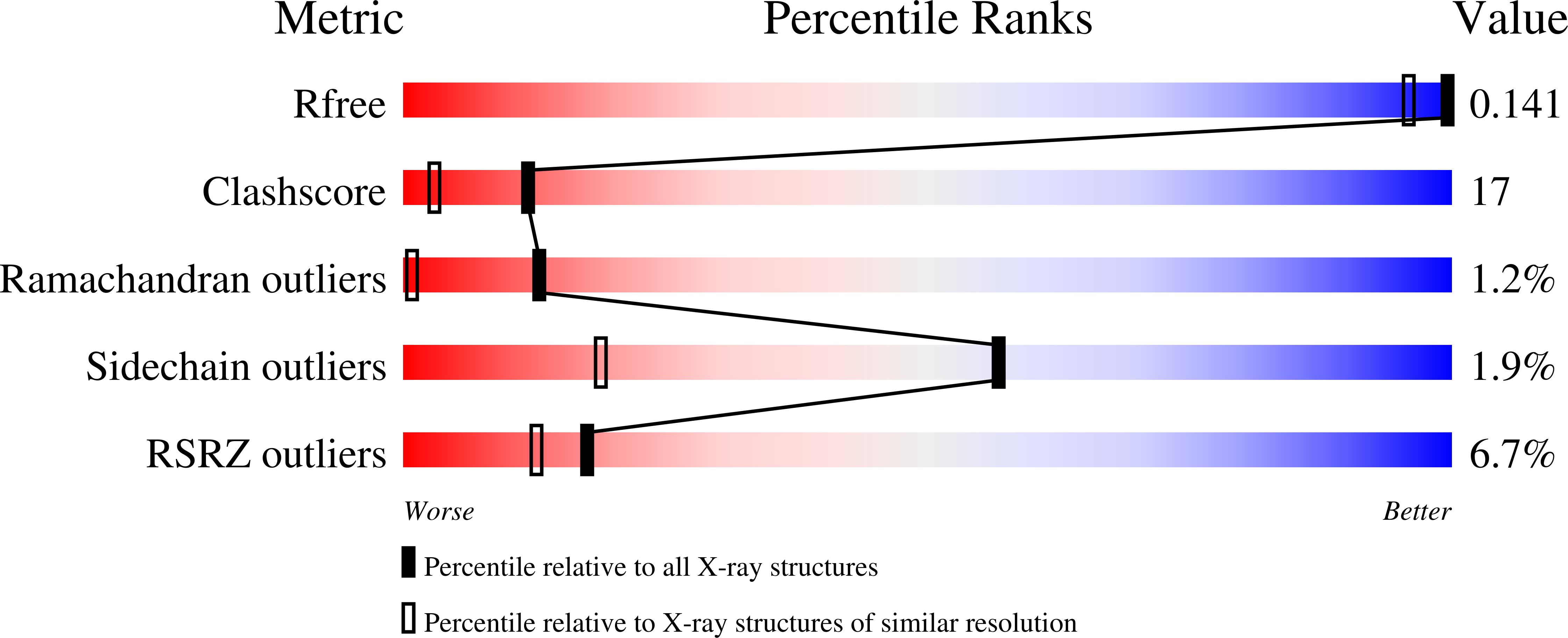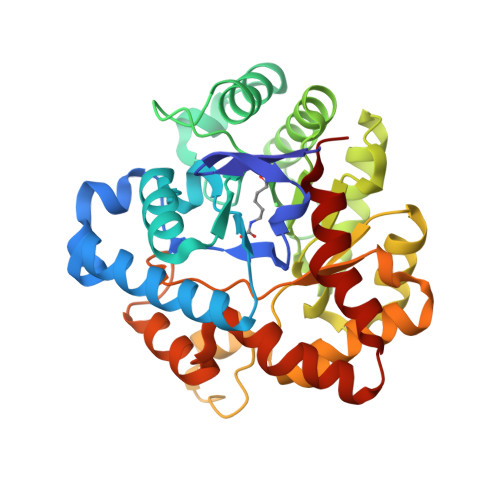Conformational sampling, catalysis, and evolution of the bacterial phosphotriesterase
Jackson, C.J., Foo, J.-L., Tokuriki, N., Afriat, L., Carr, P.D., Kim, H.-K., Schenk, G., Tawfik, D.S., Ollis, D.L.(2009) Proc Natl Acad Sci U S A
- PubMed: 19966226
- DOI: https://doi.org/10.1073/pnas.0907548106
- Primary Citation of Related Structures:
3A3W, 3A3X, 3A4J - PubMed Abstract:
To efficiently catalyze a chemical reaction, enzymes are required to maintain fast rates for formation of the Michaelis complex, the chemical reaction and product release. These distinct demands could be satisfied via fluctuation between different conformational substates (CSs) with unique configurations and catalytic properties. However, there is debate as to how these rapid conformational changes, or dynamics, exactly affect catalysis. As a model system, we have studied bacterial phosphotriesterase (PTE), which catalyzes the hydrolysis of the pesticide paraoxon at rates limited by a physical barrier-either substrate diffusion or conformational change. The mechanism of paraoxon hydrolysis is understood in detail and is based on a single, dominant, enzyme conformation. However, the other aspects of substrate turnover (substrate binding and product release), although possibly rate-limiting, have received relatively little attention. This work identifies "open" and "closed" CSs in PTE and dominant structural transition in the enzyme that links them. The closed state is optimally preorganized for paraoxon hydrolysis, but seems to block access to/from the active site. In contrast, the open CS enables access to the active site but is poorly organized for hydrolysis. Analysis of the structural and kinetic effects of mutations distant from the active site suggests that remote mutations affect the turnover rate by altering the conformational landscape.
Organizational Affiliation:
Institut de Biologie Structurale, 38000 Grenoble, France. colin.jackson@ibs.fr

















